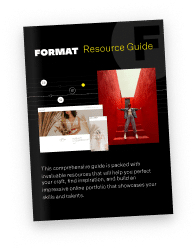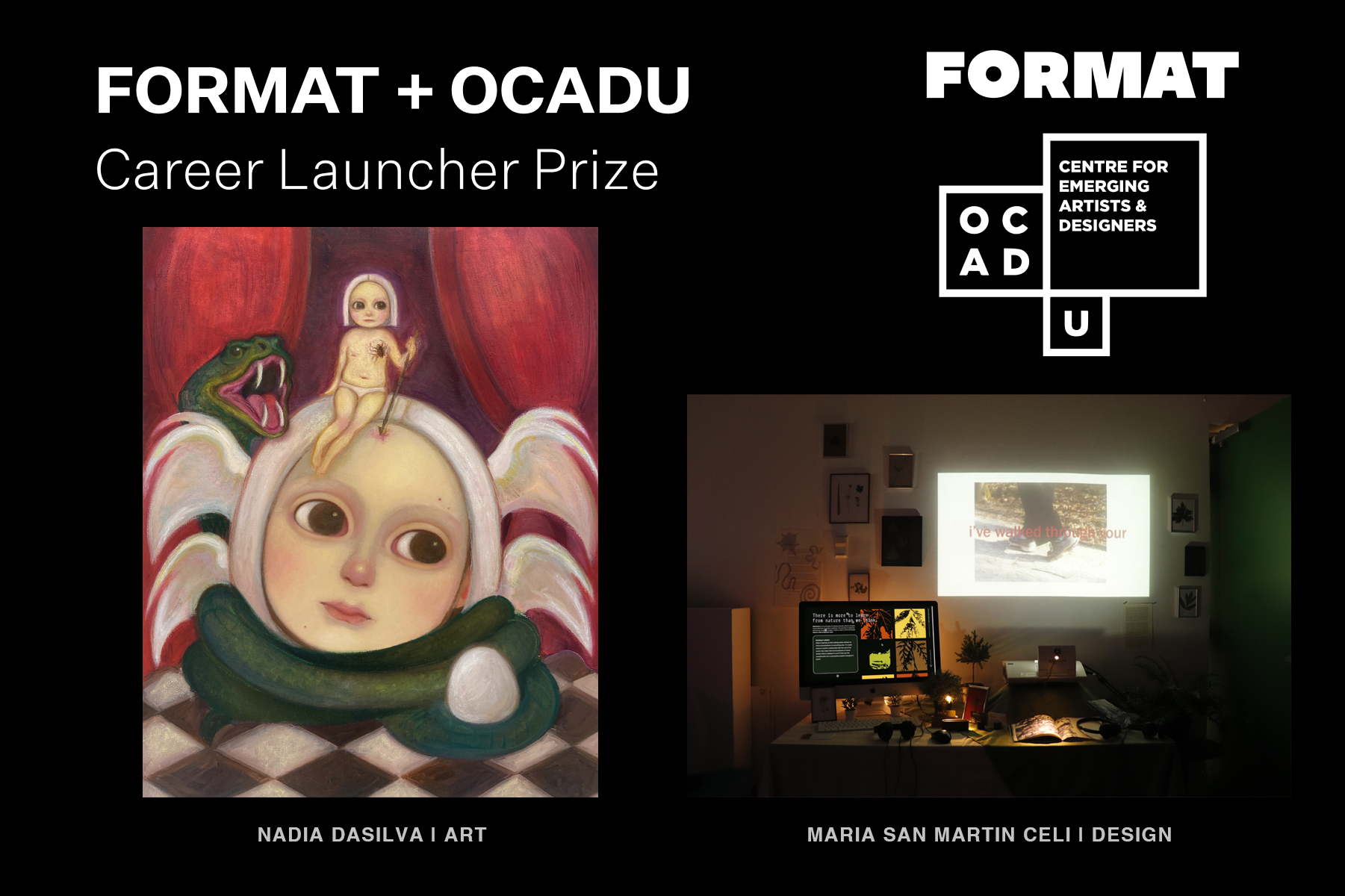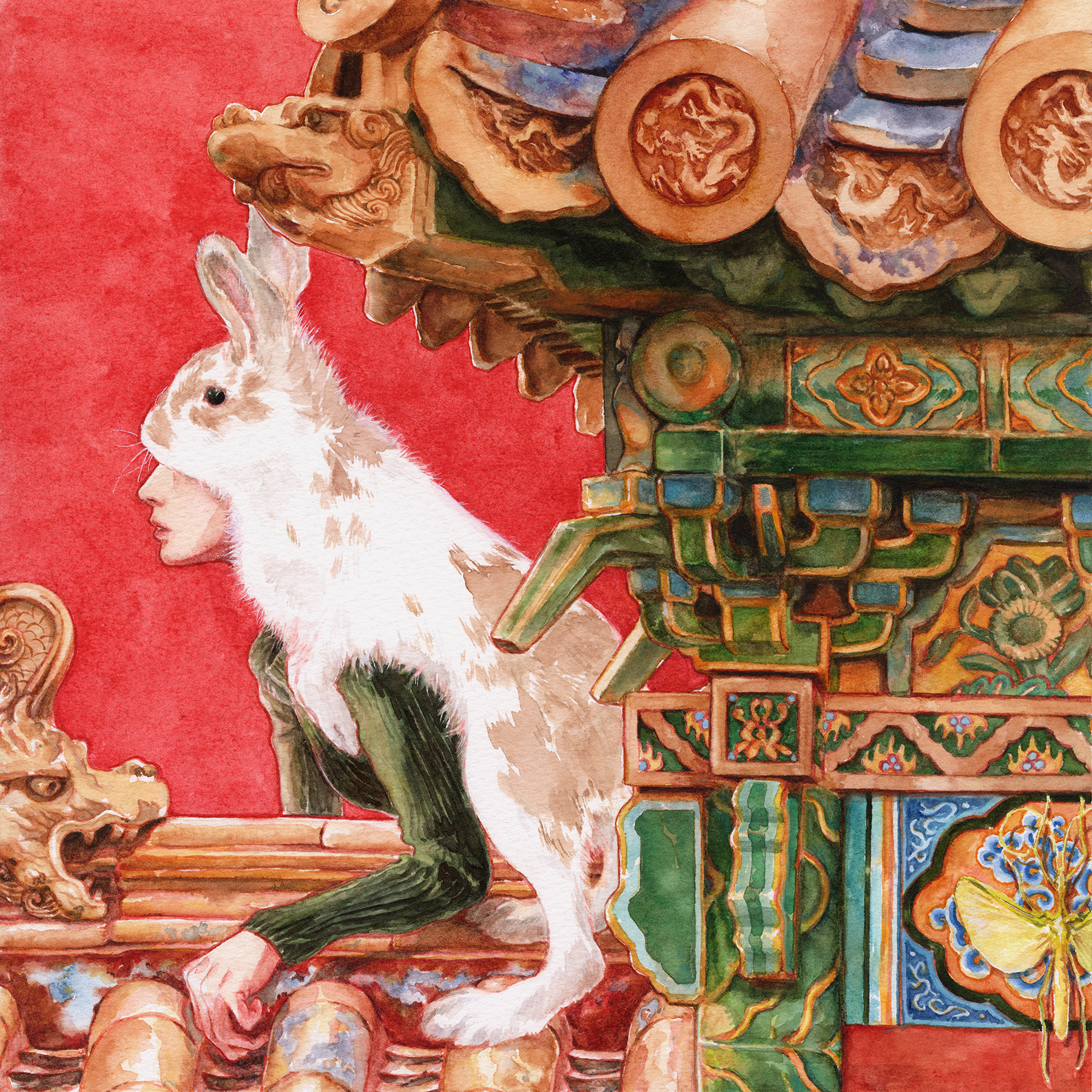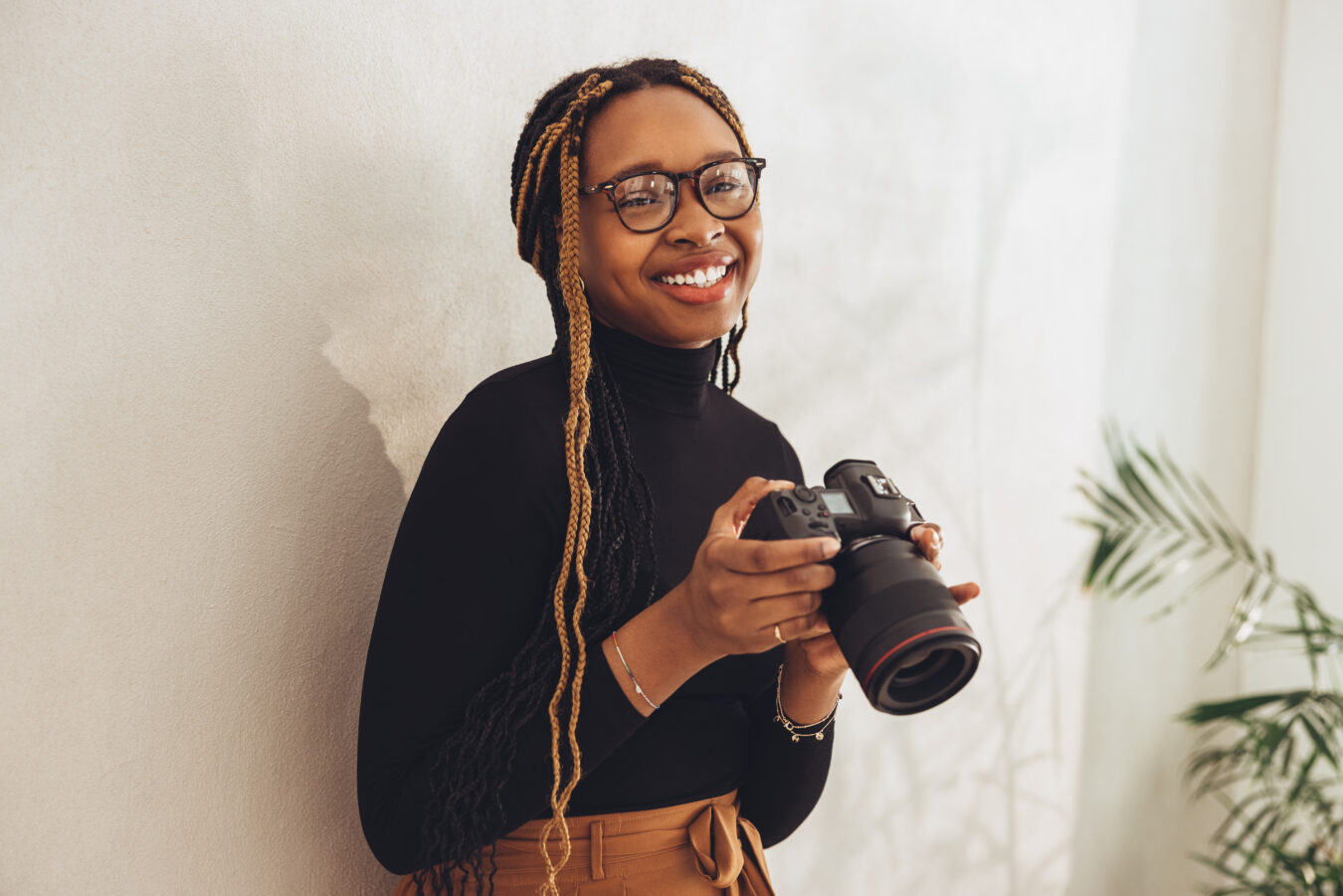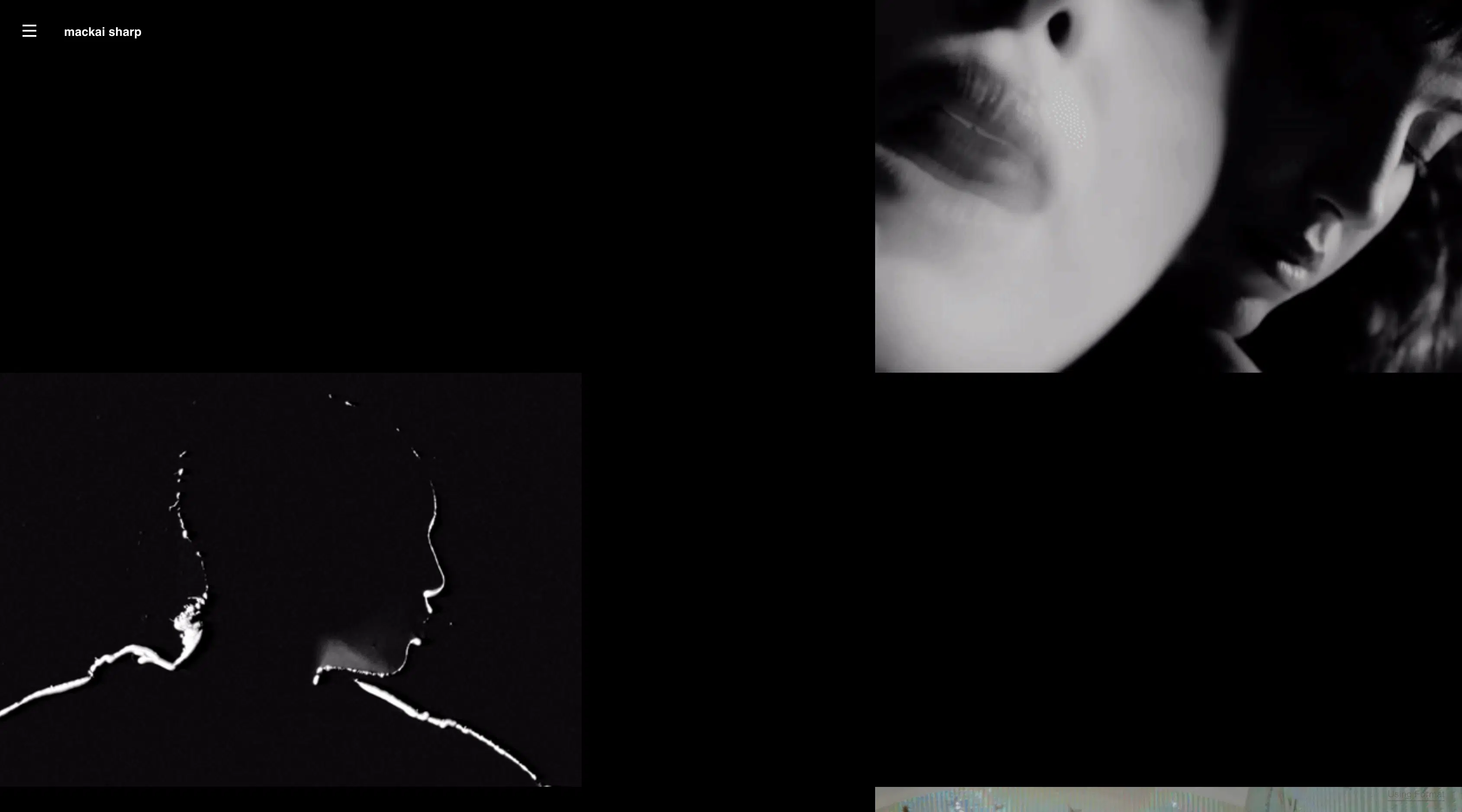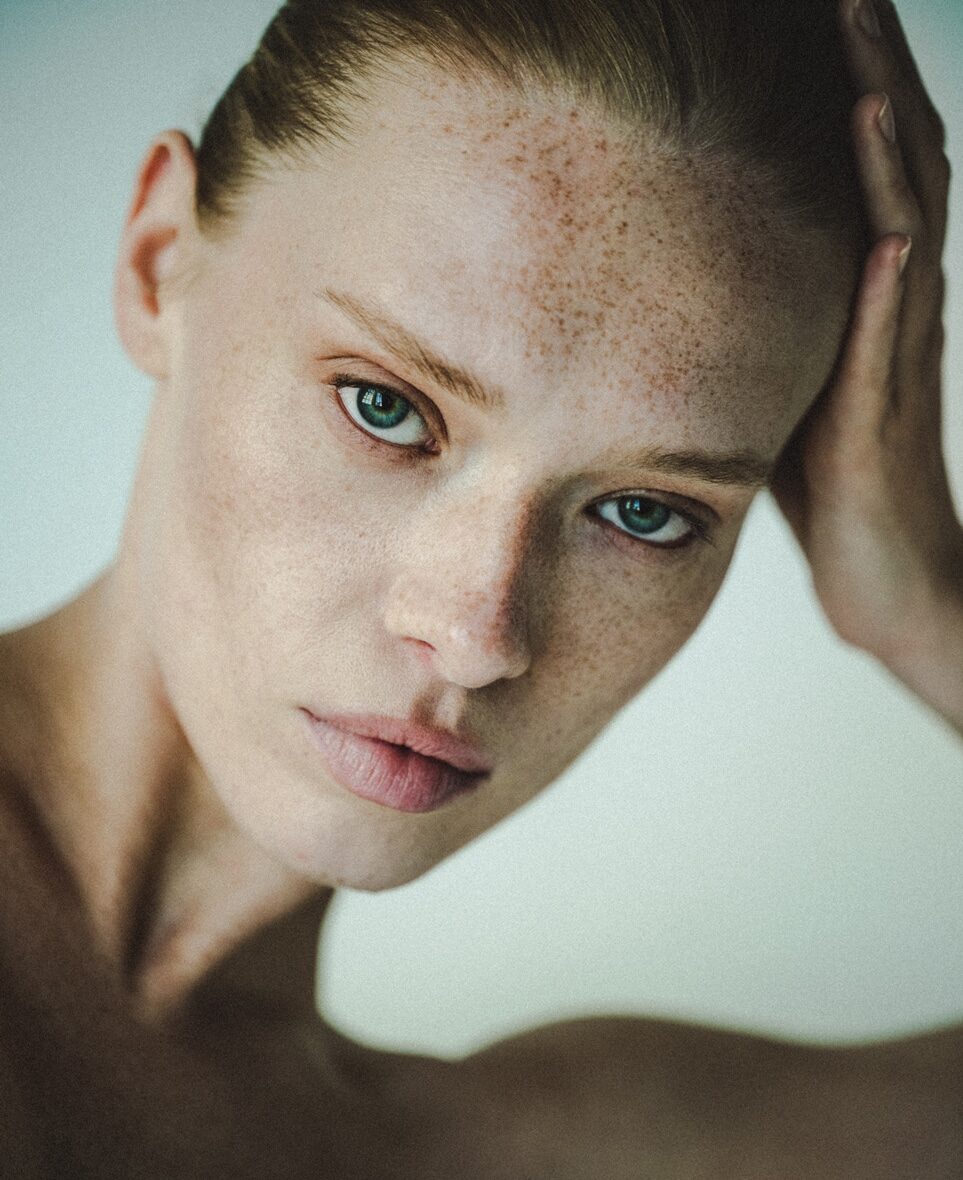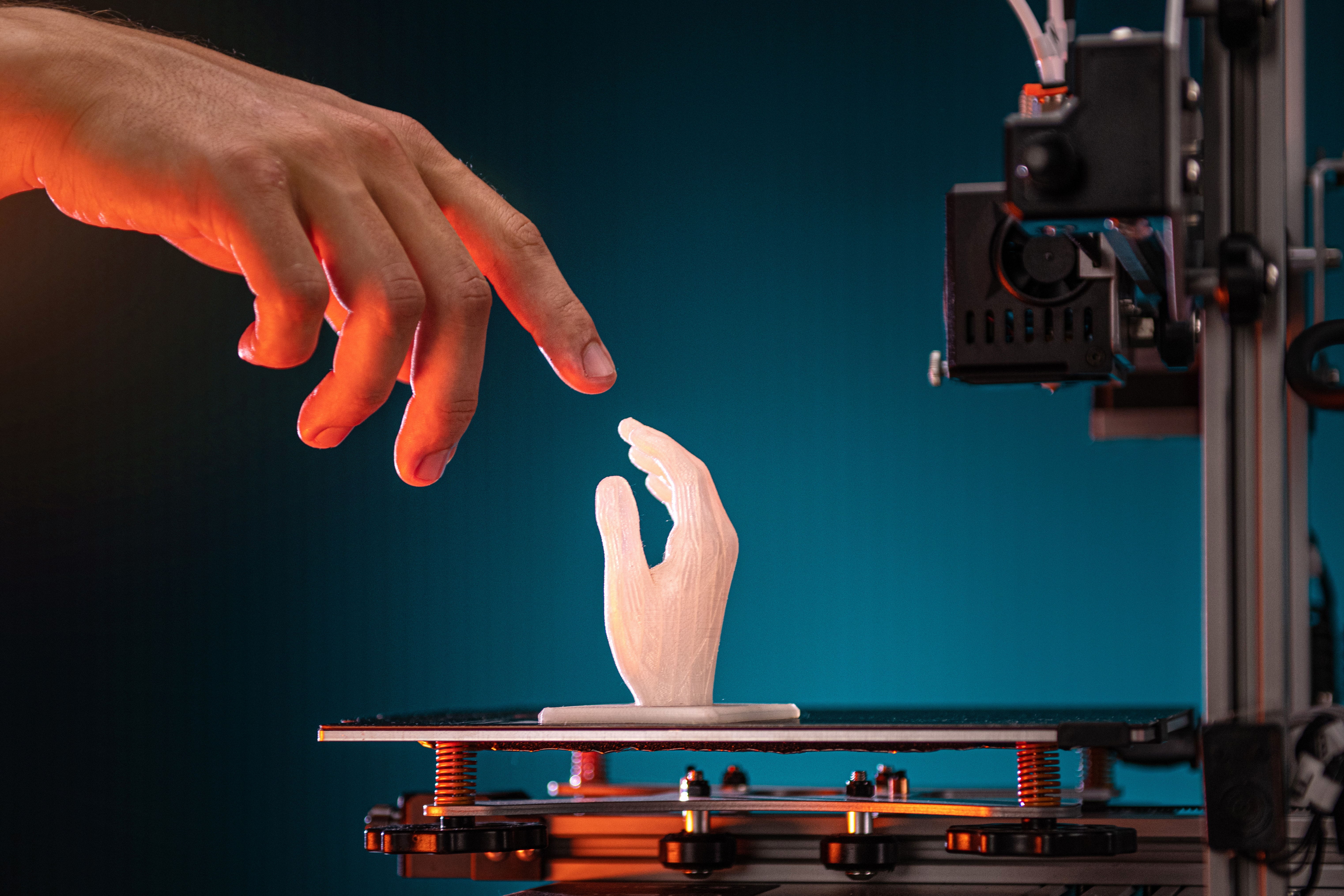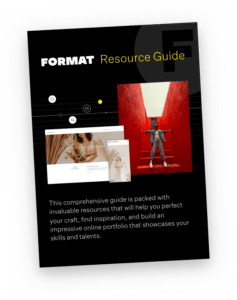World Building With Digital Artist Alex McLeod

Get Inspired by Alex McLeod’s Flex Block Template
Celebrating the release of the new flex block feature, Format collaborated with Alex to develop a project template that can be used by all Format members.
For my template I created a gif landscape. Flex block is pushing my practice, making me realize that websites can become living art pieces. There can be sections of my website that are activated and more alive than previously. Flex block is now a tool in my tool set, another color in my palette.
Try Alex’s template on your own site to create your own digital artwork.
Can you tell us about your trajectory as an artist?
Growing up, I would either be making art or making music. When I was about to graduate high school all of a sudden the question became: “okay, what are you going to do?” Some of my friends were going into trades. Some of them went to university, and I’m like – “I just want to keep making art and music” – I don’t want to grow up. It helped that my parents really enjoyed art so they were supportive of me going to study painting. In art school I met some really great people, and I learned a lot of great things, but I found that painting wasn’t the right outlet for me, but it was the catalyst in order for me to find a medium. My medium is digital, but I just didn’t have that as an option at the time. After graduating, I started teaching myself digital tools and that’s what stuck and what felt the realest with me.
Can you describe the digital tools you use?
Early on it was CorelDRAW, Photoshop and Illustrator, and I would try to use these programs to mimic 3D looks. I grew up playing a lot of 3D video games like Myst that were rendered, but they weren’t so interactive; there was a kind of painterly aesthetic to it. I was coming to these digital worlds from an art perspective rather than a gaming perspective, but still there’s a connective tissue to gaming.
My process back then was a little backwards: I would try to make the 3D stuff look 3D in software and then I would print them out and then try to repaint them because to make larger work I could paint cheaper than I could print. I think it’s a trap of a lot of young creatives- the idea that my own labor is worth nothing. It took a while before I realized I didn’t necessarily need to print the work out, I could share it on the internet. That opened whole new worlds to me; the things I was making could take different forms and have a global reach.
Coming out of art school, was it easy for you to embrace the digital realm or was that uncomfortable for you?
Working within digital communities, for me, has been just as important as academic institutions. Having my degree is the same as being a 12 year old on AOL chat rooms. Diving into this world I would be talking to who-knows-who because they designed this really cool, Insane Clown Posse drawing that they uploaded to chat rooms, and I would reach out because they had really impressive digital colouring techniques.
It was a community and an exchange like I’d never experienced before. I’d always felt like a bit of an outlier when considering the traditional arts community structure. The sense of passion, curiosity and urgency just felt different in these digital communities. As soon as I was ready to share the work it was on Facebook and it was wild to see people really positively respond to it, and in real time. That sense of open source community was something that I guess I really needed and still do.

You are known for these grand virtual worlds that blend the organic and inorganic. How did you come up with this imagery in your work?
Artists, poets, creative people – we’re best if we’re sponges and absorbing a multitude of things from around the world, taking all our experiences and blending them together in the soup of our brain. I spent a lot of time playing Mario 64 as a kid, and it was great because it was also a way of bonding with my friend group at the time. Later we got into games like Warcraft, Diablo, top down games that place you in a simulated environment as a character, but there’s also a whole, realized world built around this game. These giant digital worlds were weird and unexpected yet felt like home to me.
So when it came time to making my own work, I mix together a whole bunch of influences whether that’s like industrial design finishes, architecture, micro/macro imagery, the natural world, all these things find a way into the work, making it a richer and more interesting tapestry for me, a kind of endless playground.
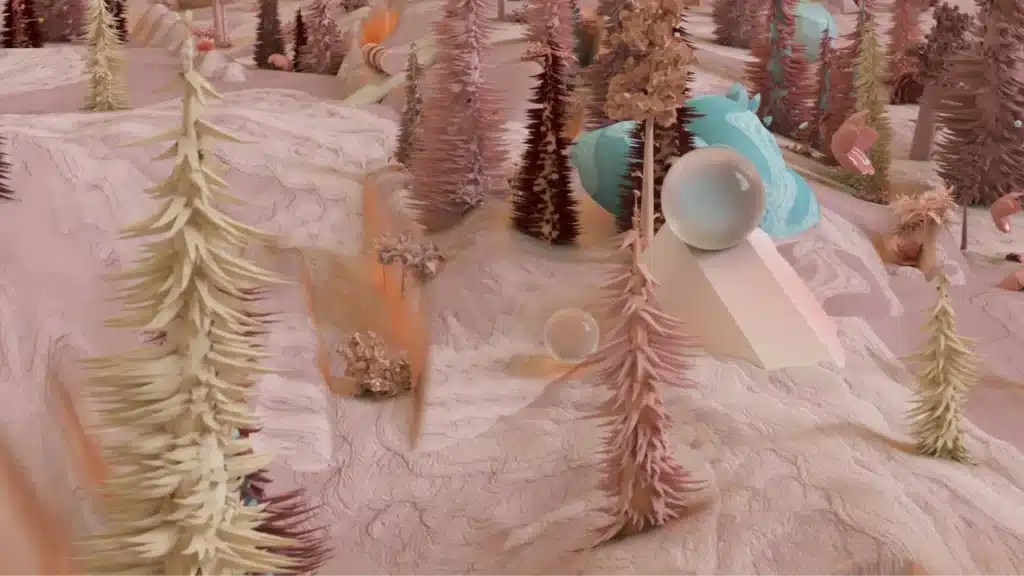
I see my work less as commenting on the world around me and more about building my own digital reality. I think the work that I make conceptually does talk about the world around us in the sense of interconnectivity- showing that we are part of our environment. We’re all breathing the same air. The same water that’s in our blood was raining down on the dinosaurs. There are all these connective tissues that are unseen.
Surfacing these connections allows us to build empathy for other people, for our environments and spaces that we occupy. I guess I’m creating a nice way to convey that message in, like a candy coated, glossy aesthetic playground.
You don’t seem concerned with the division between high and low art.
I remember going to the museum to see exhibits with my parents and feeling kind of out of touch. On the other side of things, I was going to Scarborough town center to see the murals behind all the factories, and thinking to myself; ‘that feels more relevant to me’. So I was always passionate about putting art in the public space for everybody so that anyone can enjoy it. Don’t get me wrong, I love lots of institutional, curated, work – I’m here for it- but there are different ways to serve the public through art. For me, it was very important to not really make a distinction between what’s high art, low art, what’s commercially viable, what’s fun and free. It’s amazing that now, I’m almost 20 years into my career. I’m at the point where I’m trusted enough to handle these big projects and actually put work in public spaces.
When I first came out of art school I did what I thought I was supposed to do — make art for art shows. That was the trajectory that that school taught us. I wanted to get noticed and have a show. I sent all my work to all these blogs and – armed with my website – was sending them my images. It made it easy to tell my story. And I started getting responses. I had all these blogs posting about me, and it was cool because then curators around the world would see my work. I had a show in Barcelona and it made me realize that this could be a viable path for me.
At the same time, I also had art directors that were working with coffee companies, and car companies, and they were like, “oh, this is really cool too. We want to use this aesthetic to sell our products”. And all of a sudden multiple paths forward started to open for me. I think that those doors opened just because I was open to them. I didn’t limit myself one way or another.

Did you feel like there is a big learning curve to figure out how to work in a more commercial sphere?
You know what’s funny? I think that the art world is the hardest world to operate in. I still don’t know if I completely understand it myself at all.
Conversely, in working with brands and collaborations the hardest thing was to figure out how to price my work because I’m not selling a one of one print, I’m selling an image of something that gets reproduced in certain regions for a certain amount of times and certain scales and outputs, and all of these things determine the value of my price. So luckily, at the time, I had a really good rep that helped me a lot and shepherded me through that, because otherwise I would have been taken advantage of and run through the mill and I probably would have had a horrible experience.
But the art world, navigating that, it’s funny. It’s like you make sense within little microcosms, within the Toronto art world, I’ve found that manageable – I know where the institutions are. I know the galleries. I know who runs all this stuff. But, when you start going to international affairs and then understanding that, the most expensive artwork exists on yachts, it’s bought by billionaires, the art becomes something different. It feels weird making something for an asset class. It got me questioning: What’s that space in between? So I’ve read books that try to understand it, but I’m not from that world. I love art but it can be a lot more convoluted to work in that system.

River Don’t Care – Gord Downie (Official Music Video)
Video by Alex McCleod
Tell us about your work on music videos. What does that collaboration look like?
I’ve always loved music. If I wasn’t an artist, I’d be a musician. More of my friends work in music than in the visual arts and I like to work with my friends. So when musician friends of mine need help, to make videos and things like that, it’s a great way for me to get outside of my own bubble, grow, and try something new. Working with them on music videos was a way to bridge my world to theirs. Musicians are really fun to work with because they’re used to compromising, working in bands, and with other people. Whereas a lot of visual artists, we work in silos, so it’s very hard to move us. We’re very stubborn people sometimes.
As I get older, I kind of just want to do more collaborations and break down these walls we build for ourselves. Working with Nelly [Furtado]. She’d be like, “I like this color pink, let’s do this, let’s do that” – I’d be open to these points of inspiration and we’d riff on things.
Working with Kelly Rolland, her team was pulling examples of work I had made a decade ago for my Instagram account. It was really interesting that the reverberations of something I made so long ago and casually posted on Instagram were still alive. I remember at the time, putting that work on social media was a test, a little animation that I wanted to share with the world. Years later it ends up being, at concerts for thousands of people to be a part of it.

Celine Dion – Love Again (from the Original Motion Picture Soundtrack) (Official 2024 Lyric Video)
Lyric Video by Alex McLeod
I never would have imagined that this work would be in this arena. As artists we create stuff, we don’t know how it’s going to end up or how it’s going to be perceived. For example, the video with Celine [Dion]. Her team had seen another video I did for Tafelmusik, for Mozart Requiem [in which] there are these petals falling. And they wanted that gravity in the video for her song, which was the last song she recorded after her diagnosis. So it’s a heavier song,but the lyrics were associated with this romcom, which were a bit lighter in tone. Sometimes balancing these different influences in a project can be a bit of a cognitive dissonance. So coming into a project I think “Okay, this is what you want. Let me pull these threads together to make something that will honour this work.”
Being in service of the people you really admire and really love can be a trip. Like Kelly Rolland – some of those Destiny’s Child songs are what I would play in the studio to get me hyped up to make work- And now I’m making work for you. Like what? This is a dream!
It feels weird sometimes to see the work out there. It feels natural and normal, but I try to not pat myself on the back too much and have my own internal system for judgement to keep my own standards for the work high.
I think the drive to keep growing, to make everything bigger and better, can be a bit of a trap. You get to a point sometimes where you burn out or you’re sad – that thought that and I’m trying so hard, but I’m not feeling that same feeling. And then that’s when going back to old work can really be a solution in some ways to recentre yourself and remind yourself where you’ve been.
This is amazing. I’ve done well. I’ve worked really hard. I haven’t been wasting time. So I find looking at old work as a way to cheer my spirits and remind me that [as an artist] you can rest. You can take some time off if you need to. Then I look back at my portfolio, I look back at work five years ago, I’m like, I was doing something interesting, and the thread of that is still the nucleus of what I’m making today. This was all important.

What role does your portfolio play in your practice in your professional life?
My portfolio is really important to me. Business cards are a thing of the past. Your website is the thing you send out to show people what you’re capable of. But for me, it goes way beyond this. It’s a way for me to catalog my work. And now it’s everything. It is my calling card. It’s my digital representation. It’s international. It’s all around the world on anyone’s computer at any time. My website is a collection of work that people can draw from. It’s so essential to my practice.
I can’t imagine not having that. I was thinking about it the other day and realized that my Format site contains almost everything I’ve ever made. Working in the digital realm, a lot of my work doesn’t always exist physically so having that record becomes more and more important.
I feel like Instagram is the amuse bouche to my website because my website contains so much more. But most people are on Instagram at any given moment because we all suffer from the same addiction. And it’s a great way to seduce people, to bring them to the main course, you know, and to really digest because you see 12 images and you’re like, okay, I’m seeing squares of art, but what else is there? Is there exhibition history? Is there some about? Is there more?–Give me more. What is this guy doing?
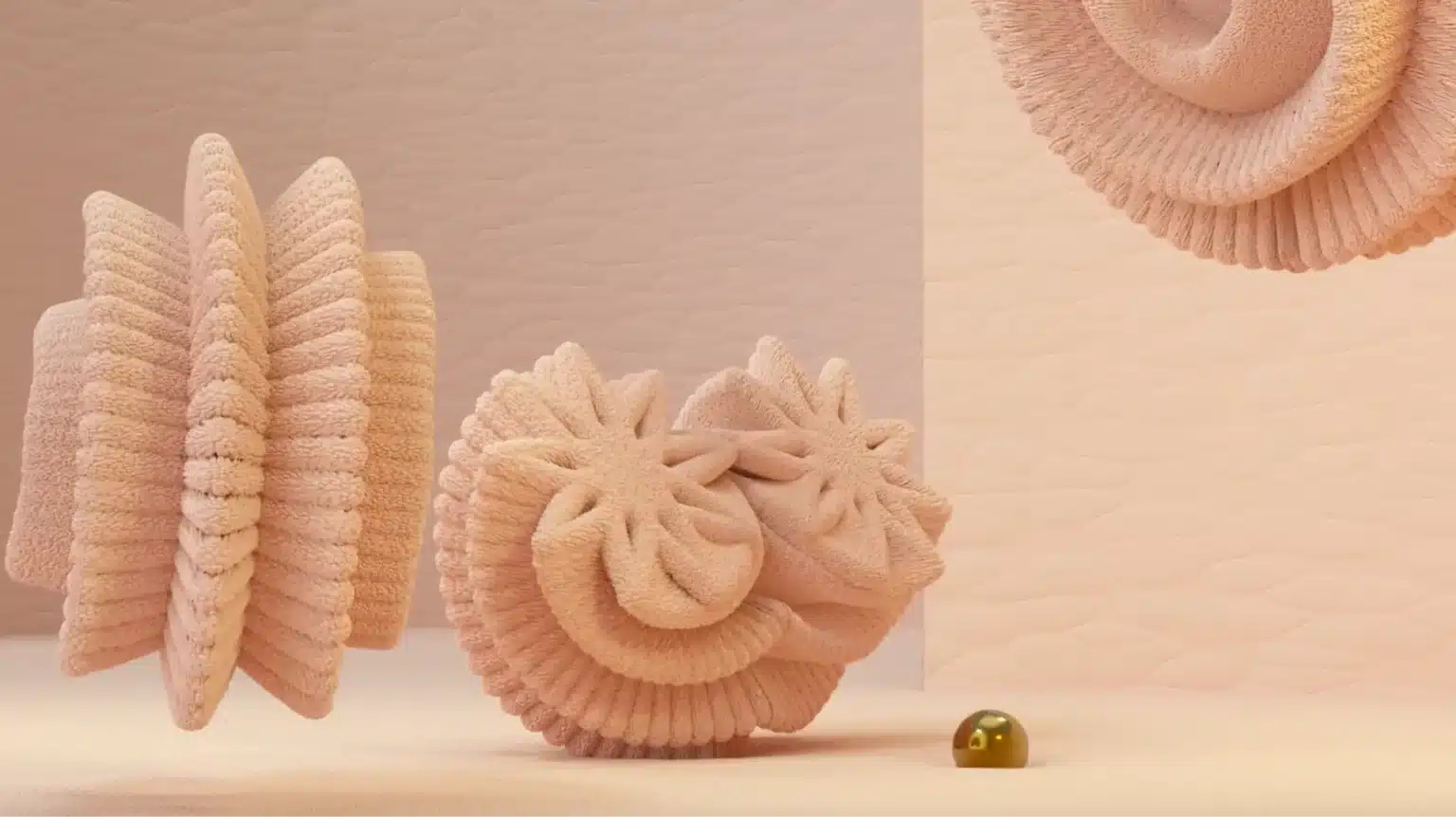
Can you tell us about your website on format and why the platform works for you?
I love Format because I can manage things myself because I’m constantly making work. So relying on a third party or designer to upload the images and resize them and all that – it just slows down the train. I’m impatient. I made this work today. I want it on my website today. I want everyone to see it because I’m impatient and I’m excited. And Format allowed me to do that and to customize things as well, it was kind of perfect because I know a little bit of coding, like enough, and I want to customize things just a little bit, enough to make it feel like, okay, I’ve got my own stamp on it.
What’s inspiring your work right now? What are you excited about in your practice? What advice would you give young, emerging artists?
I really feel like turning 40 was one of these chapters [closing]. So I’m like,new chapter, what do I want to do? What are parts of my past I don’t want to include in the future?
Cherry picking like the highlights of my life up to this point and focusing on those, I think is what’s really exciting me. I’m really interested in AI. I think it’s tremendously scary, but it’s an amazing, powerful tool. If it’s used as a tool. Technology has always pushed artists in new places.
I think advice to give to somebody starting out… be as open as you can be, because I didn’t imagine that I would be a living artist. I never thought that was a possibility–but I’m open to it. So here we are. Open to other people too, open to helping people, just being a good supporter of the community because it comes back to you, and you get supported.
I found a lot of people would be too cool for school when I first started, and I didn’t understand why. I’m like I don’t want to be like that. So I wasn’t like that. You need help, I help you, you help me right. You know? Just being a wonderful, charming gemstone of a person can go a long way in life whether you’re an artist or not.
One last thing I’ll say as advice for young people is to not get bent out of shape if people aren’t vibing with what you’re doing right away. I always think about Van Gogh–your audience might not be ready for what you’re doing. I’ve had tons of work that sat around for years and then suddenly two people want it, and I’m like it’s the same work. You didn’t want it ten years ago but now it’s good right? We sometimes have to trust the long game.

A Place For Us (video work)
by Alex McLeod
Build Your Portfolio With Format
Rated #1 online portfolio builder by artists and makers.

